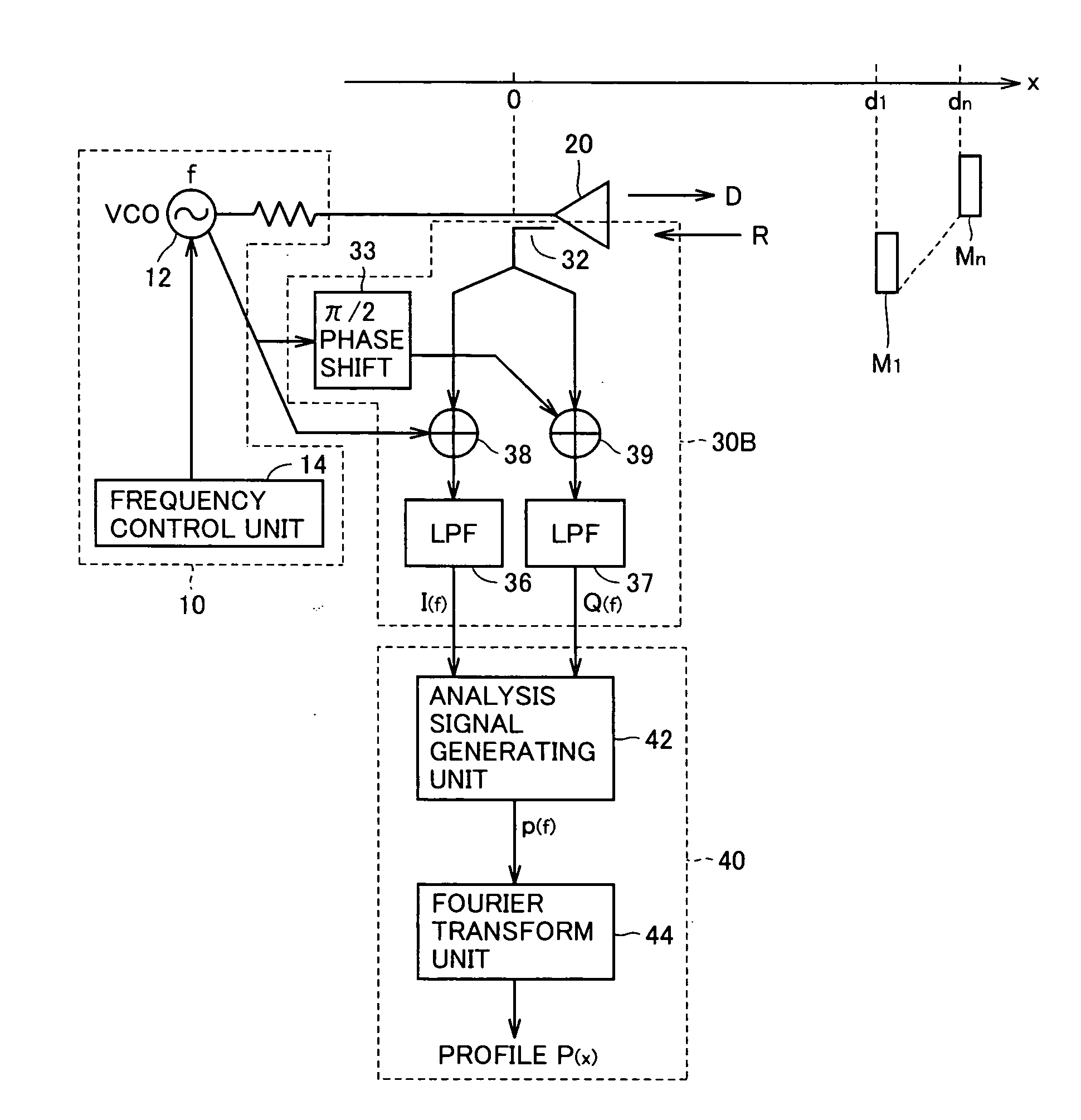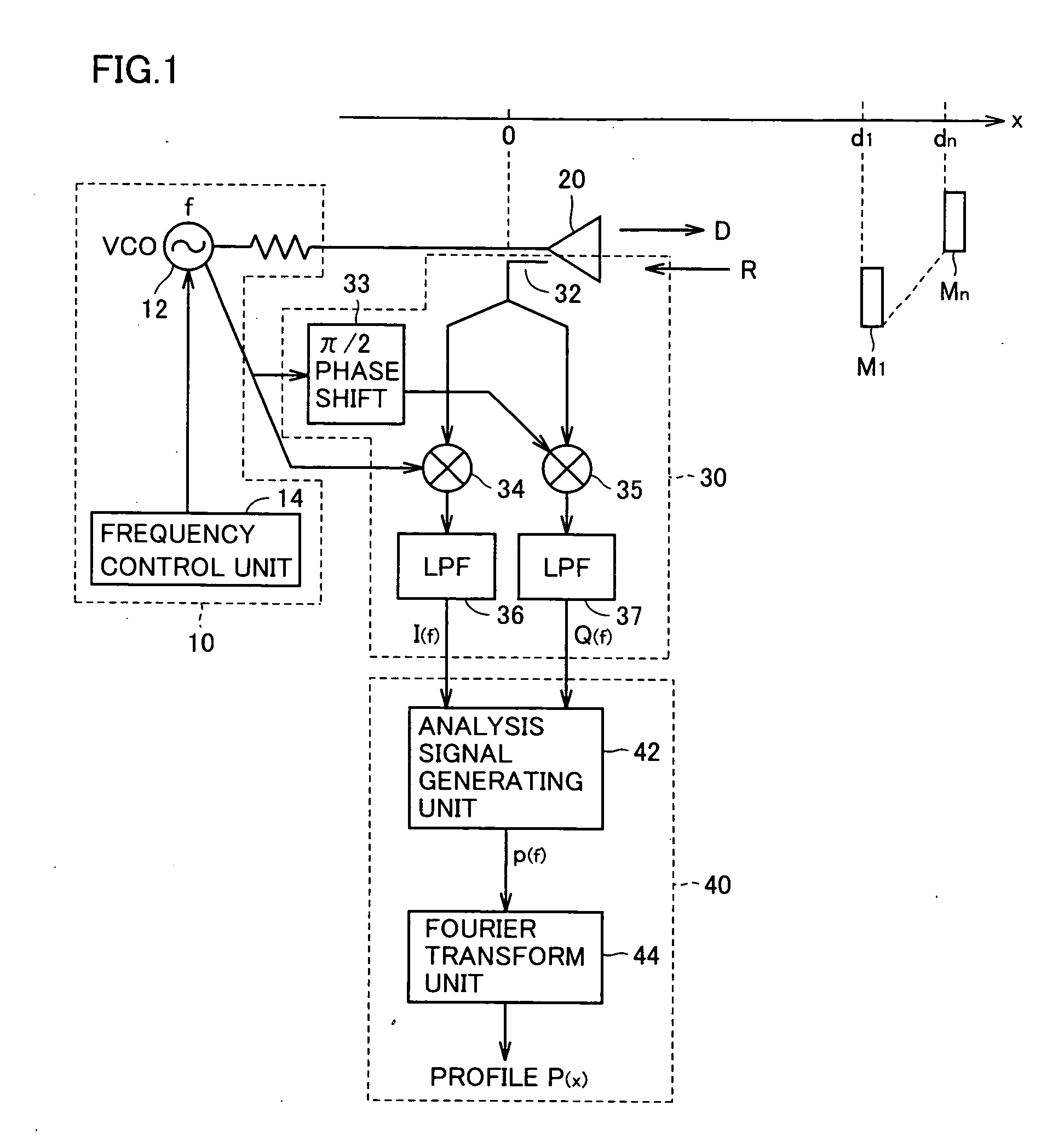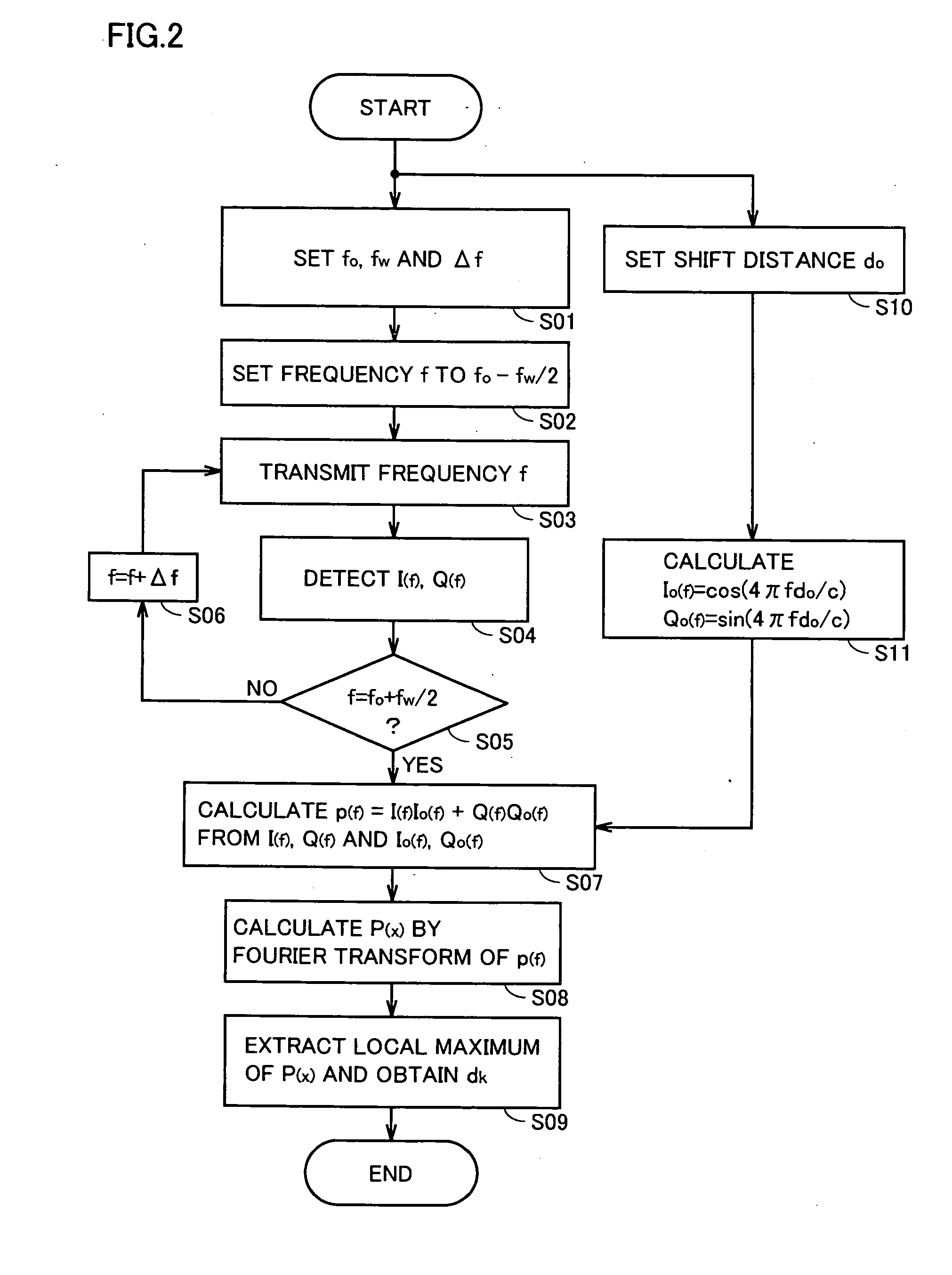Distance measuring device, distance measuring method and distance measuring program
a technology of distance measurement and distance measurement method, applied in the direction of measurement device, using reradiation, instruments, etc., can solve the problems of limited measurement accuracy, limited outdoor use, difficult measurement of short distance, etc., and achieve the effect of high accuracy of measurement to a short distan
- Summary
- Abstract
- Description
- Claims
- Application Information
AI Technical Summary
Benefits of technology
Problems solved by technology
Method used
Image
Examples
Embodiment Construction
[0091] In the following, embodiments of the present invention will be described in detail with reference to the figures. In the figures, the same reference characters denote the same or corresponding portions.
[0092]FIG. 1 is a circuit diagram showing a basic configuration of the distance measuring device in accordance with an embodiment of the present invention.
[0093] Referring to FIG. 1, the distance measuring device includes: a sending source 10 sending a transmission signal having a constant transmission frequency fw a transmission unit 20 emitting an electromagnetic wave of the same frequency f as the sent transmission signal; a detecting unit 30 detecting electromagnetic waves (hereinafter also referred to as reflected waves R) that are the electromagnetic wave output from transmission unit 20 (hereinafter also referred to as traveling wave D) reflected by objects of measurement M1 to Mn; and a signal processing unit 40 processing the reflected waves R detected by detecting u...
PUM
 Login to View More
Login to View More Abstract
Description
Claims
Application Information
 Login to View More
Login to View More - R&D
- Intellectual Property
- Life Sciences
- Materials
- Tech Scout
- Unparalleled Data Quality
- Higher Quality Content
- 60% Fewer Hallucinations
Browse by: Latest US Patents, China's latest patents, Technical Efficacy Thesaurus, Application Domain, Technology Topic, Popular Technical Reports.
© 2025 PatSnap. All rights reserved.Legal|Privacy policy|Modern Slavery Act Transparency Statement|Sitemap|About US| Contact US: help@patsnap.com



